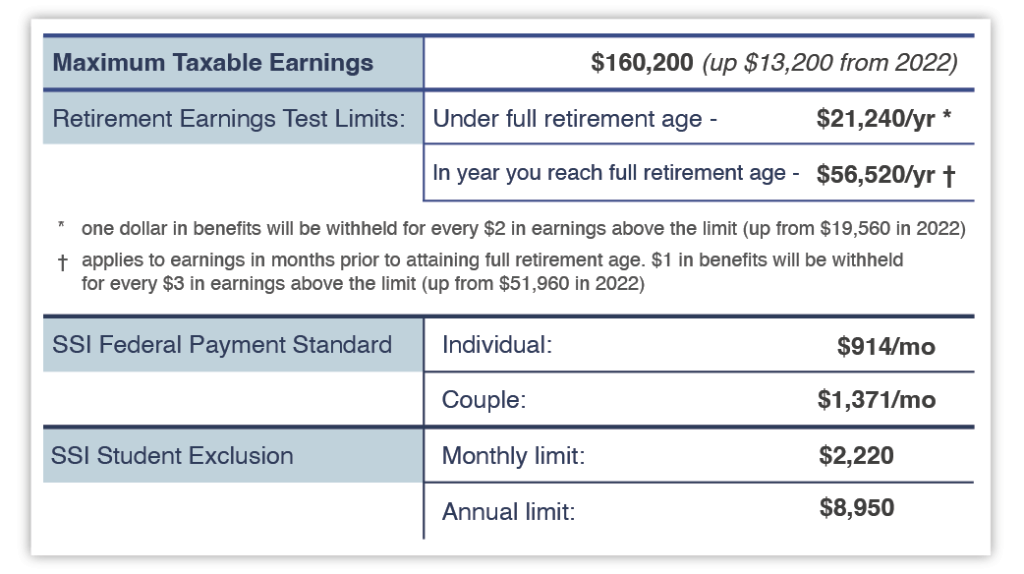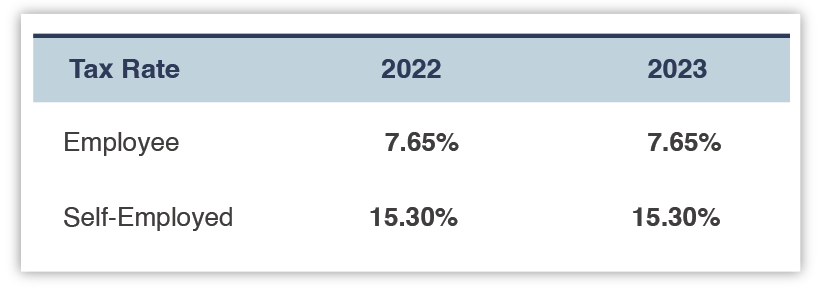Inflation Spikes Social Security for 2023
The Social Security Administration announced a whopping 8.7% boost to monthly Social Security and Supplemental Security Income (SSI) benefits for 2023. The increase is based on the rise in the Consumer Price Index over the past 12 months ending in September 2022.

The Social Security Administration announced a whopping 8.7% boost to monthly Social Security and Supplemental Security Income (SSI) benefits for 2023. This is on the heels of a 5.9% increase last year. The increase is based on the rise in the Consumer Price Index over the past 12 months ending in September 2022.
For those contributing to Social Security through wages, the potential maximum income subject to Social Security tax increases to $160,200. This represents a whopping 9% increase in your Social Security Tax! Here’s a recap of the key dollar amounts:
2023 Social Security Benefits – Key Information

What it means for you
- Up to $160,200 in wages will be subject to Social Security taxes, an increase of $13,200 from 2022. This amounts to $9,932.40 in maximum annual employee Social Security payments (an over $800 increase!) so plan accordingly. Any excess amounts paid due to having multiple employers can be returned to you via a credit on your tax return.
- For all retired workers receiving Social Security retirement benefits, the estimated average monthly benefit will be $1,827 per month in 2023, an average increase of $146 per month.
- SSI is the standard payment for people in need. To qualify for this payment, you must have little income and few resources ($2,000 if single, $3,000 if married).
- A full-time student who is blind or disabled can still receive SSI benefits as long as earned income does not exceed the monthly and annual student exclusion amounts listed above.
Social Security & Medicare Rates

The Social Security and Medicare tax rates do not change from 2022 to 2023.
Note: The above tax rates are a combination of 6.20 percent Social Security and 1.45 percent for Medicare. There is also a 0.9 percent Medicare wages surtax for single taxpayers with wages above $200,000 ($250,000 for joint filers) that is not reflected in these figures. Please note that your employer also pays Social Security and Medicare taxes on your behalf. These figures are reflected in the self-employed tax rates, as self-employed individuals pay both halves of the tax.




